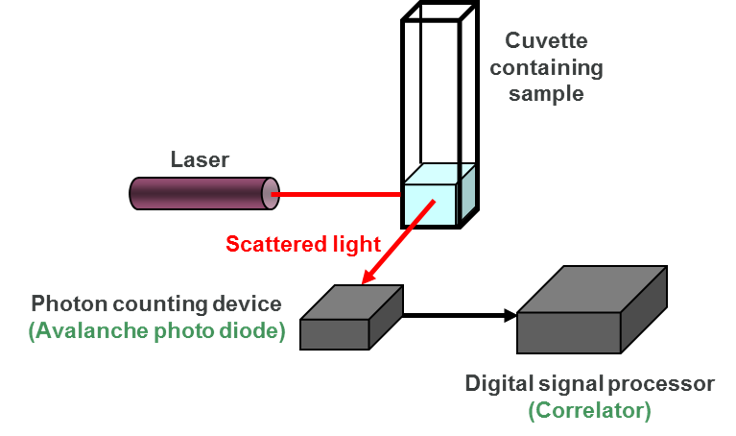

At 173° backscatter, the scattering volume observed at the detector is about 8 times the volume observed with classical 90° scattering optics. An optical configuration that allows measurements of samples at lower concentrations of smaller sizes is backscatter detection. Inevitably, as the size of the molecule or particle becomes smaller, the amount of excess scattering produced reduces.Ĭonventional dynamic light scattering instruments use a detection angle of 90° and this optical configuration may not be sensitive enough for the successful measurement of small particles or molecules even with the incorporation of a powerful laser at low wavelength. This in turn depends on a number of factors such as the refractive indices of the molecule and dispersant, the concentration of the sample, the power and wavelength of the laser used, the sensitivity of the detector and the optical configuration of the instrument. This excess is the difference in scattering between the molecule or particle being studied and the dispersant it is prepared in. The lower size limit of the dynamic light scattering technique depends on the amount of excess scattered light produced. Where k is the Boltzmann constant, T is the temperature and η is the dispersant viscosity. The correlation of the signal, G, decays at an exponential rate which is dependent upon the diffusion of the particles being measured (Dahneke 1983 Pecora 1985 ISO13321 1996). The time-dependent fluctuations in the intensity of scattered light that occur are analyzed using an autocorrelator which determines the autocorrelation function of the signal. However, there are very few techniques available for the measurement of small molecules and particles in solution.ĭynamic light scattering (DLS) is a technique for characterizing the size of colloidal dispersions which utilizes the illumination of a suspension of particles or molecules undergoing Brownian motion by a laser beam (Dahneke 1983 Pecora 1985 ISO13321 1996 Peters 2000). Similarly during the production of nanoparticles, the size of the particles can be used as a measure in a quality control process (Hu et al. The size of the molecules can be used as a quality control measure. For example, proteins are being utilized directly in the pharmaceutical industry as active agents in drugs (Akagi et al. Measuring the size of small molecules is currently of great interest in many applications.

Evidence to support these size results for sucrose is discussed. These sucrose results suggest that sub nanometer measurements are achievable with a precision of 0.1 nm.
#Dynamic light scattering series
The peak means (with standard deviations) obtained for the intensity and volume data from a series of sucrose concentrations, ranging from 5 to 35% w/v, were measured as D I,Mean = 0.82 nm (0.11 nm) and D V,Mean = 0.62 nm (0.05 nm), respectively. Hydrodynamic diameter values of less than 1 nm are obtained by the use of 173° backscatter detection that is applied to increase the sensitivity of DLS. This paper discusses the factors which will influence the lower size limit of DLS and reports the use of sucrose as a test sample to probe this lower limit of the technique. Diffusion coefficient and particle size information can be obtained from the analysis of these fluctuations. Dynamic light scattering (DLS) measures time-dependent fluctuations in the scattering intensity arising from particles undergoing random Brownian motion.


 0 kommentar(er)
0 kommentar(er)
